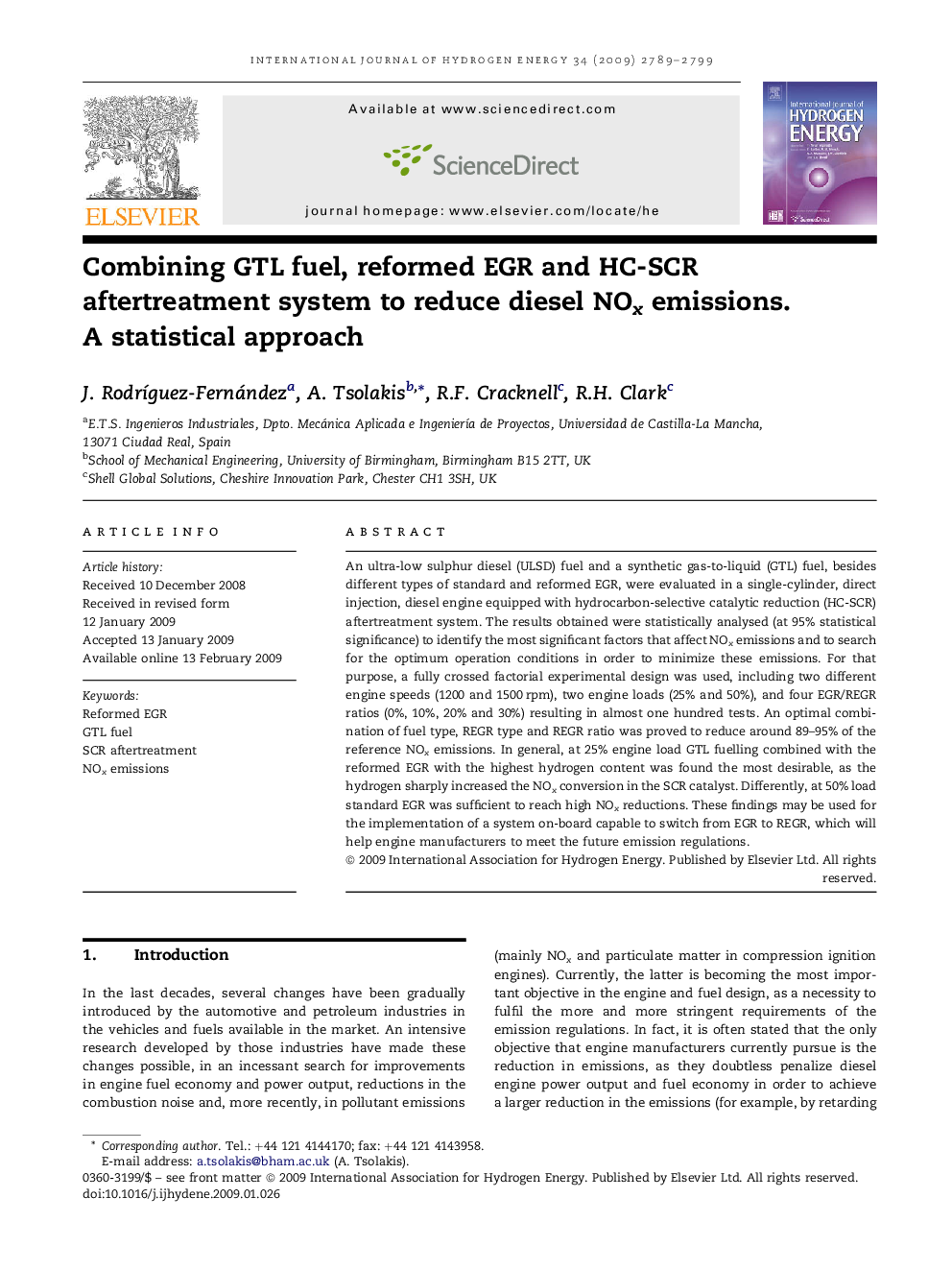| Article ID | Journal | Published Year | Pages | File Type |
|---|---|---|---|---|
| 1281214 | International Journal of Hydrogen Energy | 2009 | 11 Pages |
An ultra-low sulphur diesel (ULSD) fuel and a synthetic gas-to-liquid (GTL) fuel, besides different types of standard and reformed EGR, were evaluated in a single-cylinder, direct injection, diesel engine equipped with hydrocarbon-selective catalytic reduction (HC-SCR) aftertreatment system. The results obtained were statistically analysed (at 95% statistical significance) to identify the most significant factors that affect NOx emissions and to search for the optimum operation conditions in order to minimize these emissions. For that purpose, a fully crossed factorial experimental design was used, including two different engine speeds (1200 and 1500 rpm), two engine loads (25% and 50%), and four EGR/REGR ratios (0%, 10%, 20% and 30%) resulting in almost one hundred tests. An optimal combination of fuel type, REGR type and REGR ratio was proved to reduce around 89–95% of the reference NOx emissions. In general, at 25% engine load GTL fuelling combined with the reformed EGR with the highest hydrogen content was found the most desirable, as the hydrogen sharply increased the NOx conversion in the SCR catalyst. Differently, at 50% load standard EGR was sufficient to reach high NOx reductions. These findings may be used for the implementation of a system on-board capable to switch from EGR to REGR, which will help engine manufacturers to meet the future emission regulations.
